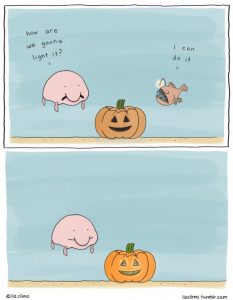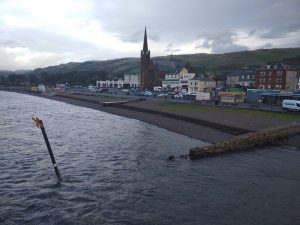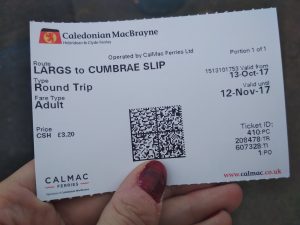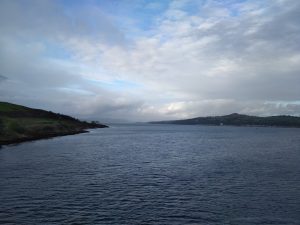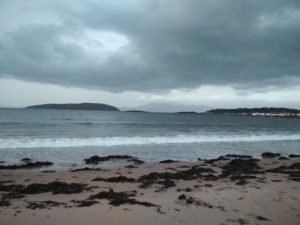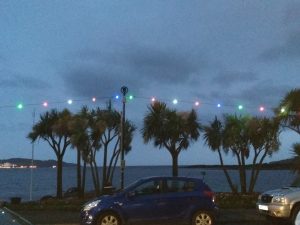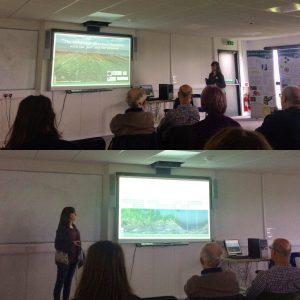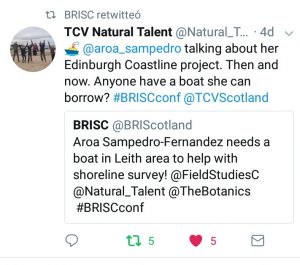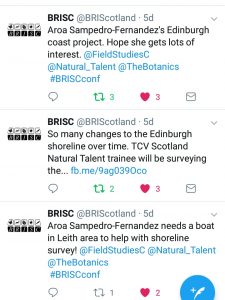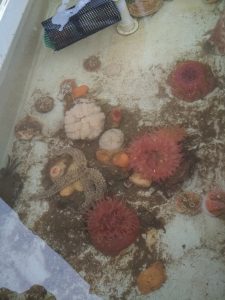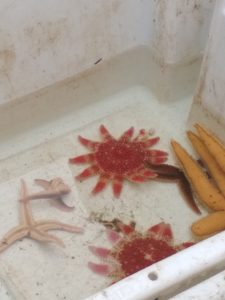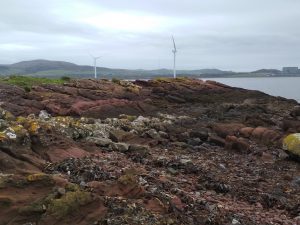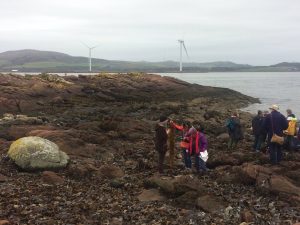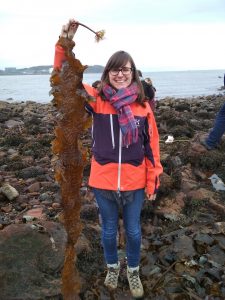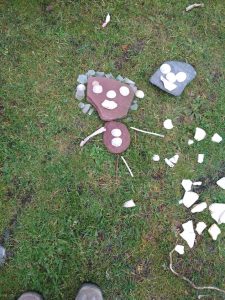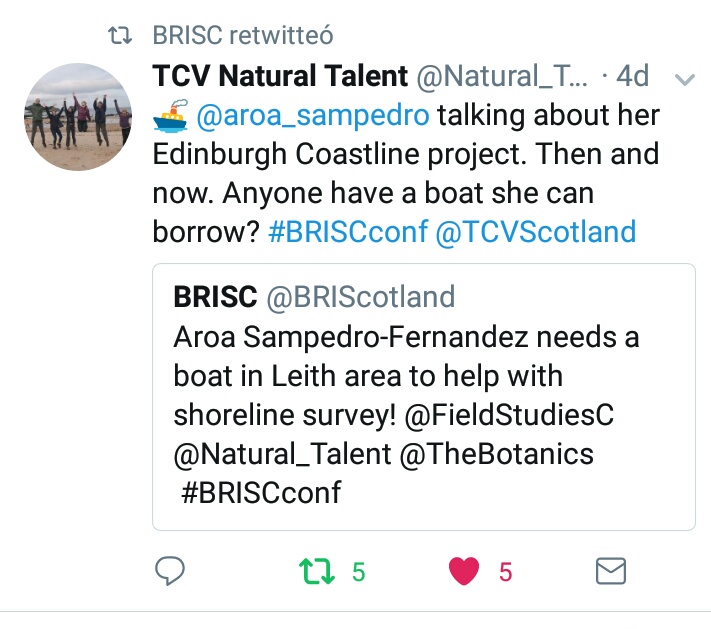
Biological Recording in Scotland (BRISC) offered me the opportunity to talk about my project during their annual conference! One more chance to test my skills talking in front of experts.
First time in Largs and Cumbrae
Because I’m from a part of Europe that Vikings didn’t want to conquer (others did it, don’t worry), I find pretty fascinated all the Viking history. And Largs has loads! I call it Scottish Vs. Vikings 1263. The battle under stormy weather. But this is not a blog for historical battles…
Largs is a beautiful wee coastal town ( I love coastal towns) surrounded by mountains, forests and the sea. To get to Cumbrae, you need to take a ferry. I reckon I get super exited when I travel by ferry, always trying to see seals or dolphins or jellyfish or wales or sharks…well I would probably freak out a little bit if I see a massive shark!
Luckily, I met four other girls attending the conference when I arrived to Millport the night before, a girl working in environment and public health, a Phd student at Oakley and two students at The University of Edinburgh (1 Scottish, 1 German, 2 Canadians and myself, Spanish. Love it!).
BRISC Conference
I need to admit it, at breackfast, in a scale of 10 of how nervous a person can be before giving a talk, being 10 the point when you forget your name, I scored a 9.9
We arrived to the conference room with plenty time to meet people and find out what was going on (and to find out as well that Kirsty, another Natural Talent trainee was there, thanks for coming!). There was a table with lovely cards of Scottish landscapes and wildlife. Another table with information about Marine Conservation Society. And loads and loads of nice people willing to make you feel welcome. It was such an amazing and friendly environment, where people were interested to know what is happening around Scotland and how they can get involved/help. At that point, my scored went down to 7.
- The Edinburgh shoreline: engaging with the past and the present: my project is about telling a story of the Edinburgh shoreline, studying seaweeds. I will be surveying several locations in Edinburgh, making a list of current species diversity. With that list, I want to compare what is out there these days, with historical data from Herbarium specimens and prior surveys. When I was out there, I could score easily 5.
It was an incredible experience, that I would repeat as many times as necessary to sell the Edinburgh shoreline and the lovely seaweeds to everyone! We had the opportunity of learning about several ways to survey seaweeds in the UK (CoCoast, Seasearch, Big seaweed search…). How sheep love eating seaweeds (google it, honestly, love those pictures, it is in my list of things I want to see!). And right before lunch time, a very exiting topic, and new for me. Find out the cause of death of aquatic mammals in the Scottish coastline. I very much would like to volunteer for them, and report any finding. Pretty interesting to know that they only found one whale dead by plastic pollution.
And for a few minutes, I was on Twitter!
Fun fact! After 10 minutes or so, the projector switched off. I truly thought I had broken it, I was using one of those remote controls for changing slides while you’re talking, and sometimes I’m not the best with pressing buttons and computers!
After lunch wee walk to the coast. Dolphins, seals and seaweeds!
We started our visit with some captures by the FSC Millport team. Massive sea anemone(s), sunstars and others. My apologies because I’m just writing two species names, but it was my very first time seeing sun-stars and anemones that big!
I was pleased to see the beautiful coastline. We were a bit late to get the best tide, but it was good enough for getting a taste of a rocky shore, and an introduction of the CoCoast survey. I hope after this conference, seaweeds have more fans and more people interested in them.
Summarising, excellent people and environment, loads of new knowledge, and the feeling that seaweeds have been understudied for too long, and it is time for us to grab the opportunity of learning as much as possible about them and share our knowledge with the public. Because at the end, species such as Sugar kelp are “ecosystem engineers”, creating habitats for other marine organisms, and there’s a big necessity to better understand their role and the impact that Climate Change and Land reclamation may have on them.
Thank you all for your help and support, and for this amazing opportunity. 